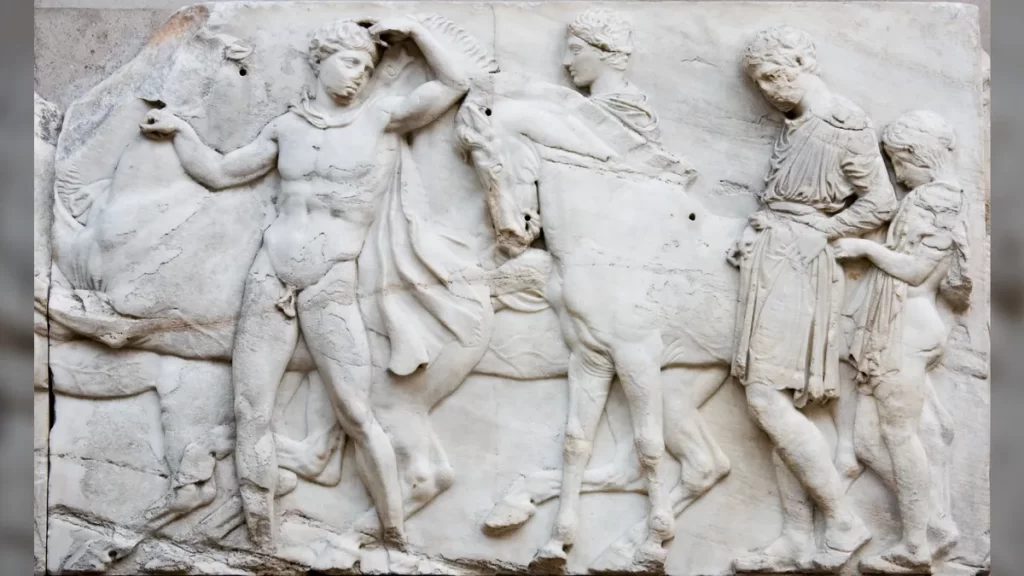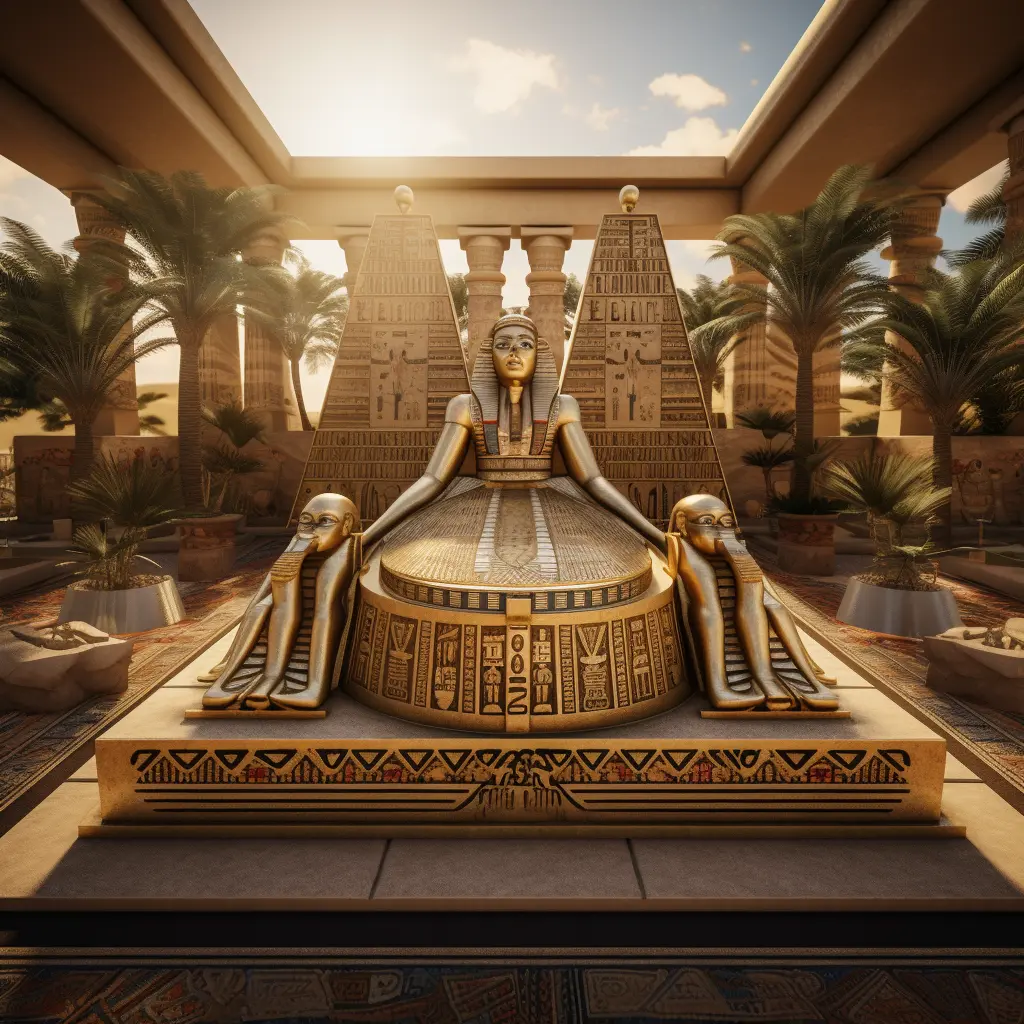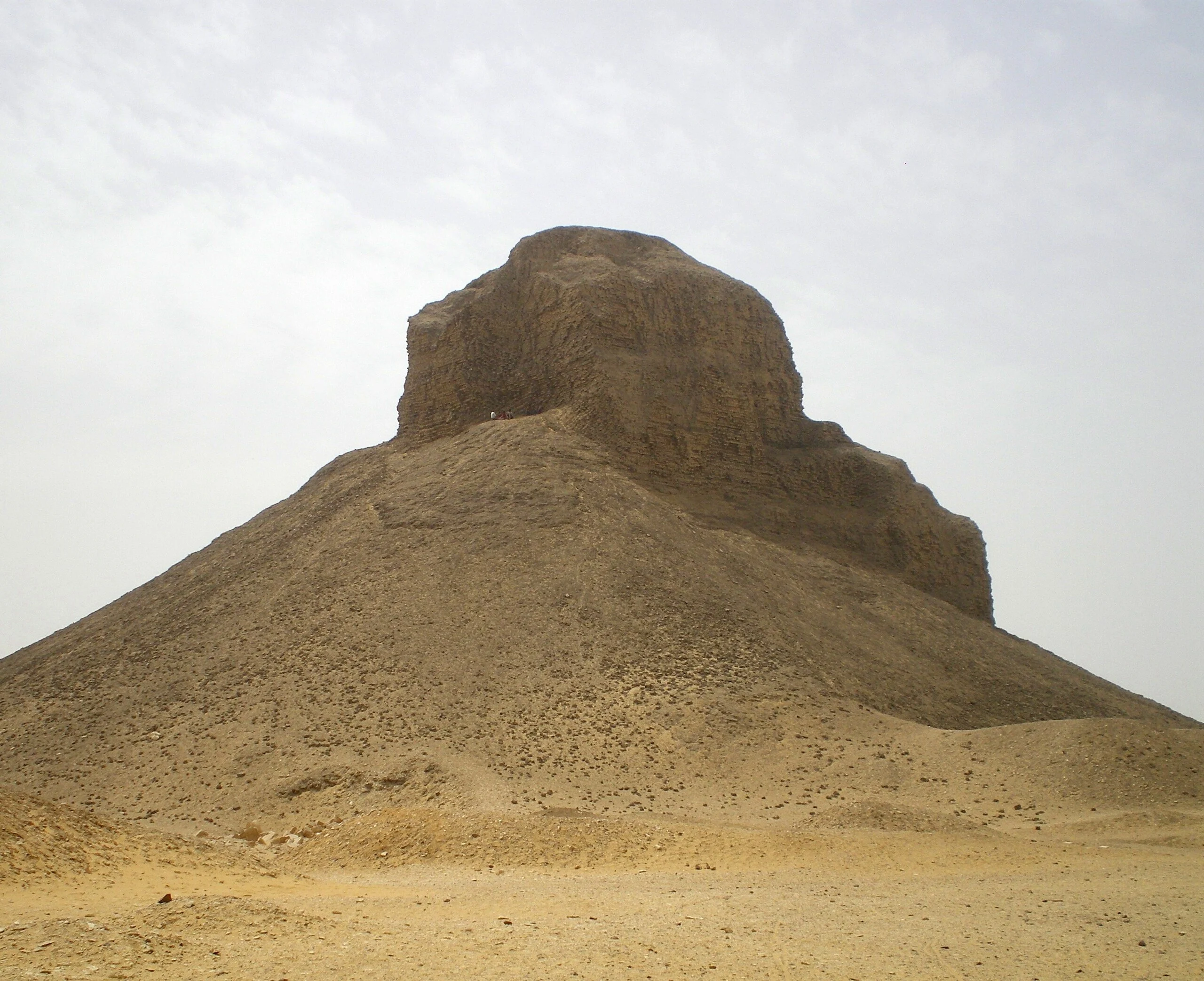
The Parthenon Sculptures originally exploded with colour, contrary to the conventional wisdom that all ancient Greek statues were immaculately white.
Ancient Greeks created the Parthenon Sculptures, also known as the Elgin Marbles, to adorn the Parthenon temple in Athens’ exterior 2,500 years ago. They are currently kept at the British Museum in London and are a subtle mixture of white, grey, and beige, like many antique sculptures.
However, a recent study shows that the colours of the well-known statues weren’t always dull; rather, they were previously painted with vivid colours and fascinating patterns.
The statues of gods and fantastical creatures defending the fifth-century B.C. temple were formerly painted in vivid Egyptian blues, whites, and purples. According to the study, which was published on Wednesday (Oct. 11) in the journal Antiquity, the colours were used to represent the water that some figures rose from, the snakeskin of a mysterious sea serpent, the empty space and air in the background behind the statues, and figurative patterns on the robes of the gods.
Giovanni Verri, a conservation scientist at the Art Institute of Chicago, is the study’s primary author. “The Parthenon sculptures at the British Museum are considered one of the pinnacles of ancient art and have been studied for centuries now by a variety of scholars,” he said in a statement. “Despite this, no traces of colour have ever been found and little is known about how they were carved.”
Archaeologists have long speculated that ancient Greek artisans left the statues white on purpose because paint frequently doesn’t remain long on marble and the surfaces of the sculptures weren’t designed to allow adhesion from things like paint. According to the experts, this even prompted historical restorations to remove old paint traces discovered on the statues.
Archaeologists employed luminous imaging, a method that makes trace chemical elements from concealed paint on the sculptures’ surfaces light, to look into the past of the statues. The team rapidly identified concealed patterns on the sculptures’ surfaces that revealed floral patterns and smeared figurative representations.
The most common pigments discovered were four: two whites probably derived from the mineral gypsum and bone white, a pigment made from bone ash; a blue that was first invented by the Egyptians and was the primary colour used by the ancient Greeks and Romans; and a purple tint made according to an unknown recipe.
According to the study’s authors, these colours were probably “as visually important as the carving,” as “it was what the viewer saw.”
“The elegant and elaborate garments were possibly intended to represent the power and might of the Olympian gods, as well as the wealth and reach of Athens and the Athenians, who commissioned the temple,” Verri stated. Since the sculptures had paint residue on their backs, the researchers concluded that they were “certainly contemporary to the building” and had most likely been painted before being installed on the temple.
The 17 statues, which were previously a part of a marble frieze measuring 525 feet (160 metres) long and illustrating classical Greek mythology, were taken to the United Kingdom in the 19th century by Thomas Bruce, the seventh Earl of Elgin and British ambassador to the Ottoman Empire. The sculptures were initially known as the “Elgin Marbles” because to his involvement.
In 1816, Bruce sold the statues—roughly half of the remaining sculptures—to the British Crown. The statues, which are now housed in the British Museum, have been the focus of a legal repatriation dispute between the UK and Greece since 1983.
The story the marbles tell isn’t entirely obvious because they are mostly bits. However, they also have statues of gods responding to the birth of Athena, who is claimed to have sprung from Zeus’ enlarged head following a powerful blow from Hephaestus, the Greek god of blacksmiths, who is depicted with an axe.



